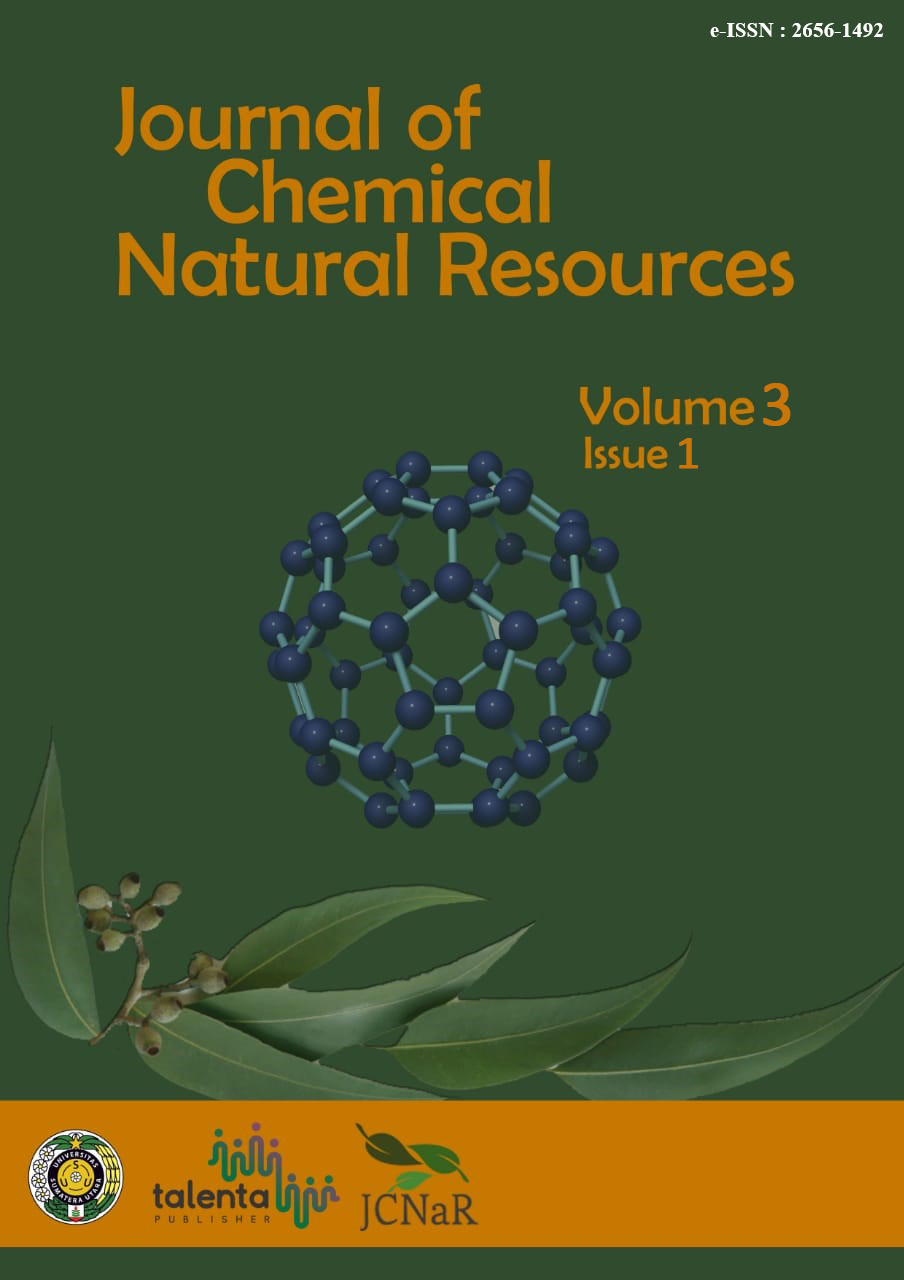Enzymatic Glyserolysis of Palm Kernel Oil Using Lipase Enzyme Catalyst From Candida rugosa with Variations of 1-Propanol, 2-Propanol, N-Heptane, and Isooctane Solvents
DOI:
https://doi.org/10.32734/jcnar.v3i1.9333Keywords:
Candida rugosa lipase enzyme, diglyceride, glycerolysis, monoglyceride, palm kernel oil, solventsAbstract
Monoglyceride and diglyceride have high economical value and are needed in the food/pharmaceutical, cosmetic, and cleaner product industry as surface agents and emulsifiers. Producing monoglyceride can be done by hydrolysis, glycerol esterification of fatty acid, and glycerolysis. This research aims to produce monoglyceride and diglyceride from palm kernel oil by glycerolysis catalyst Candida rugosa enzyme with a variety of solvents such as 1-propanol, 2-propanol, n-heptane, and isooctane. The glycerolate was analyzed by thin-layer chromatography, it showed that the retardation factor (Rf) value of monoglyceride fraction from glycerolate using n-heptane as the solvent was 0.07, and the retardation factor (Rf) value of diglyceride fraction from glycerolate using 1-propanol as the solvent was 0,2. Each of the fractions was analyzed by gas chromatography showed that the high percentage of monoglyceride was produced by glycerolysis using n-heptane which yielded 14,06% and the high percentage of diglyceride was produced by glycerolysis using 1-propanol which yielded 77,51%. The solvents which can be used in enzymatic glycerolysis and can yield high percentages of monoglyceride is n-heptane and the high percentage of diglyceride was conducted by enzymatic glycerolysis using 1-propanol.
Downloads
Downloads
Published
Issue
Section
License
Copyright (c) 2022 Journal of Chemical Natural Resources

This work is licensed under a Creative Commons Attribution-ShareAlike 4.0 International License.















